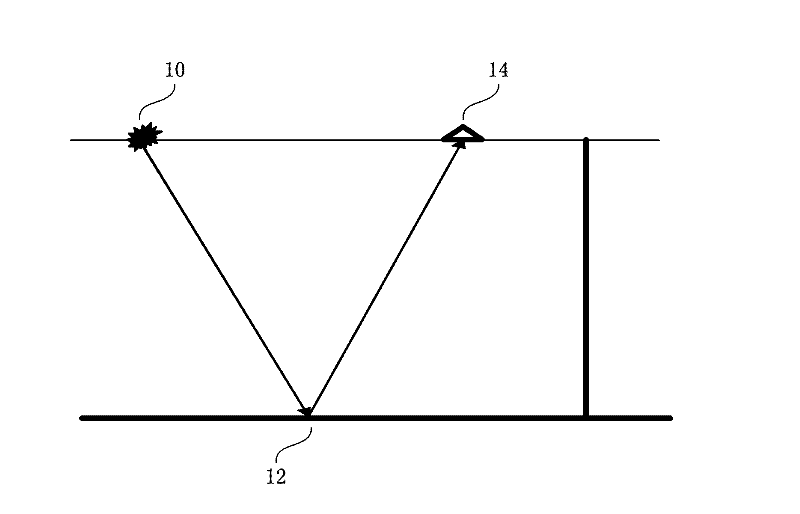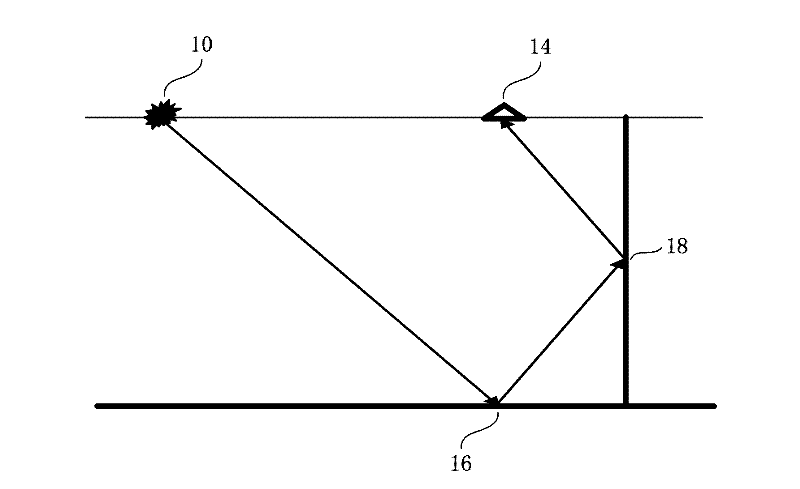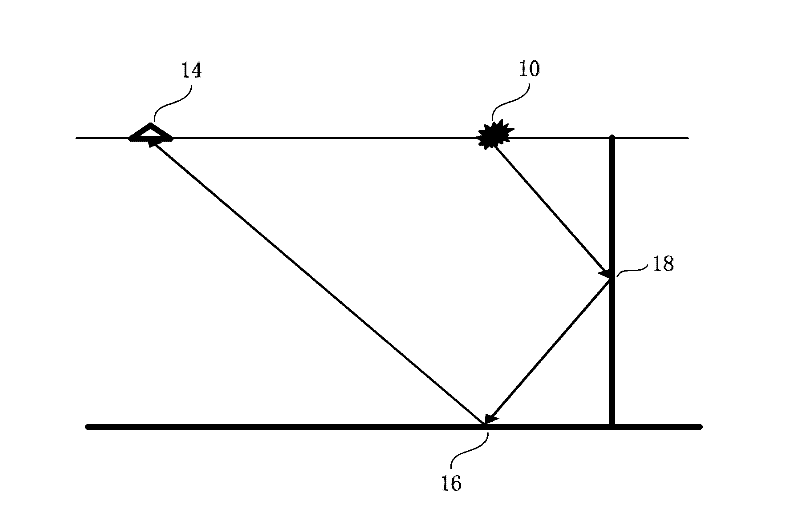Seismic migration method and device for steep-dip stratums and fractures
A steep dip, stratigraphic technology, applied in seismic signal processing and other directions, can solve the problems of extremely high accuracy of velocity models, inability to achieve dual-reflection wave migration imaging, inability to provide velocity modeling methods, etc., to achieve good amplitude preservation and The effect of lateral shift adaptability
- Summary
- Abstract
- Description
- Claims
- Application Information
AI Technical Summary
Problems solved by technology
Method used
Image
Examples
example 1
[0108] Such as Figure 3a Shown is a formation velocity model with a steep dip angle, in which the velocity of the first formation 31 is 2000 m / s, and the velocity of the second formation 32 is 4000 m / s. Using the conventional Kirchhoff integration method and the one-way wave prestack depth migration method can only The imaging of the first horizontal reflection interface 34 and the second horizontal reflection interface 35 is obtained, but the formation interface 33 with a steep dip angle cannot be imaged. and Figure 3b Shown is the corresponding double-reflection prestack depth migration results of the model. It can be seen that the method of the present invention can well realize the imaging of the strata with steep dip angles. Imaging of reflective interfaces.
example 2
[0110] Such as Figure 4a Shown is the fracture velocity model, wherein the velocity of the first formation 41 is 1500 m / s, the velocity of the second formation 42 is 3500 m / s, and the fracture 43 is filled according to the actual conditions of the gas-bearing medium, the specific filling conditions As shown in Table 1:
[0111] Table 1
[0112]
[0113] Using the conventional Kirchhoff integration method and the one-way wave prestack depth migration method can only obtain the imaging of the horizontal reflection interface 44 , but cannot image the fracture 43 . and Figure 4b Shown is the double-reflection prestack depth migration result corresponding to the fracture model, and it can be seen that the method of the embodiment of the present invention can well realize imaging for fractures.
[0114] The embodiment of the present invention utilizes the double-reflection pre-stack migration method to realize seismic imaging for strata with steep dip angles and fractures. ...
PUM
 Login to View More
Login to View More Abstract
Description
Claims
Application Information
 Login to View More
Login to View More - R&D
- Intellectual Property
- Life Sciences
- Materials
- Tech Scout
- Unparalleled Data Quality
- Higher Quality Content
- 60% Fewer Hallucinations
Browse by: Latest US Patents, China's latest patents, Technical Efficacy Thesaurus, Application Domain, Technology Topic, Popular Technical Reports.
© 2025 PatSnap. All rights reserved.Legal|Privacy policy|Modern Slavery Act Transparency Statement|Sitemap|About US| Contact US: help@patsnap.com



